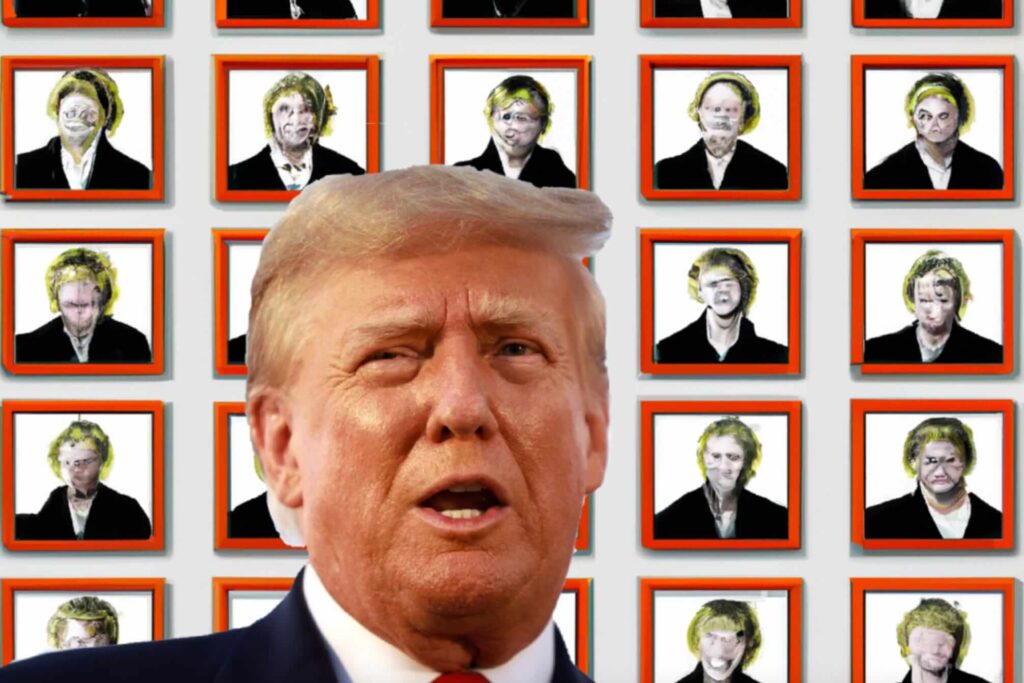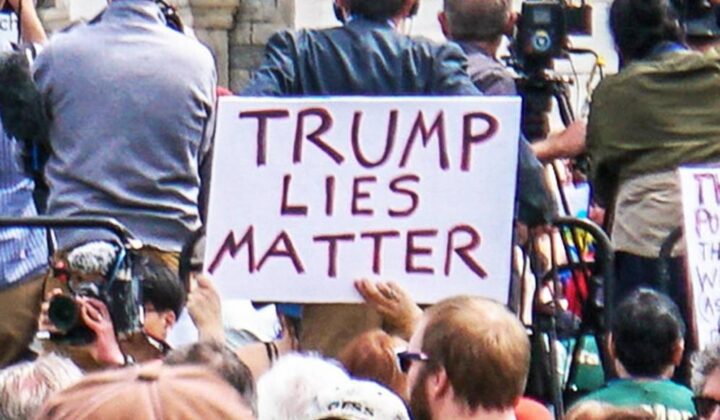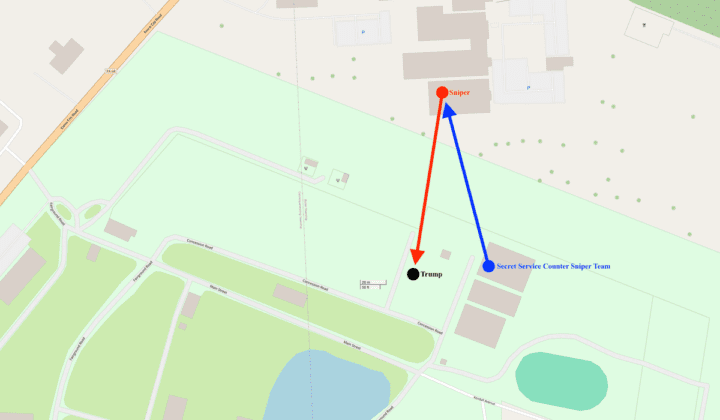90 percent of Americans consider themselves above average in identifying fake news. We’re in for a shock.
Over the summer, the DeSantis campaign posted a video which included three images of Donald Trump and Anthony Fauci hugging and smiling. At first glance, they seemed real enough, but even the naked eye could tell that things weren’t exactly right. Trump’s hair was impossibly jagged. The text you could read in the background was nonsense. The whole thing just looked a bit off.
Almost instantly, people started pointing out the fairly obvious: the images were AI-generated fakes. If anyone was fooled, they were few and far between.
The United States is just beginning to come to grips with the intersection of disinformation and AI technology, which has been more frightening for what it seems to portend for our future than its actual influence on recent elections. With the rapid advancement of AI technology, however, experts are suggesting that 2024 could be the tipping point.
“The biggest immediate risk [of generative AI] is the threat to democracy… there are a lot of elections around the world in 2024, and the chance that none of them will be swung by deep fakes and things like that is almost zero,” NYU Professor Gary Marcus said at a panel this fall.
Unfortunately, Americans are poorly prepared. A 2021 study found that about 90 percent of Americans consider themselves above average in identifying fake news headlines, and that “the individuals who are least equipped to identify false news content are also the least aware of their own limitations.” While most Americans recognize that disinformation is a serious problem, they don’t think it is a problem affecting them personally. When more and more of these fakes start circulating, we can expect more and more people to start sharing them.
For better or for worse, the United States is hardly alone in facing this problem. In India just this past month, deepfake videos of politicians have been viewed millions of times, leading the government to promise new draft regulations to come out in early December.
Yet while the whole democratic world is facing the same destabilizing threats from AI-created content, not everywhere is equally vulnerable. For the best example on how to handle the nascent crisis, the US should look to the country that is most targeted, most experienced, and most prepared: Taiwan.
The Taiwan Model
On January 13, Taiwanese voters will determine the successor to President Tsai Ing-wen, whose two-terms as president have been defined by her tough stance on China. For the Chinese government in Beijing, the stakes are huge. The election is the CCP’s best opportunity to see a new Taiwanese government come to power that is more amenable to its ambitions of Chinese-Taiwanese reunification.
The result is that China sends a lot of disinformation into Taiwan. So much so that for the last decade, Taiwan has led the charts as the country subjected to the most foreign disinformation and cyberattacks. When China finds a disinformation campaign in Taiwan to be particularly successful, they replicate it in countries around the world, earning Taiwan the moniker “the testing ground” for Chinese disinformation.
But Taiwan isn’t accepting Chinese disinformation campaigns without a fight. In 2017, the government announced its plans to launch an ambitious media literacy campaign in schools. Students learn how to identify propaganda, question sources, and apply critical thinking skills online. Now, students can’t graduate without taking part in online training.
The government has also taken steps to increase its ability to flag and take down foreign disinformation, but the public remains wary about giving it too much power. So instead of purely government-driven action, public-private partnerships and NGOs have led Taiwanese efforts to educate the public and flag disinformation online. It’s a model which ensures that the Taiwanese people are amply protected, without ceding authority to government censors.
Years of these efforts have come to surprising results: the Taiwanese public doesn’t trust itself to perfectly pick out fake news from true stories. 48 percent of Taiwanese respondents were not too or not at all confident in their ability to detect fake news online, compared to just 41 percent of respondents who were confident in their abilities, according to a May 2023 survey. Interestingly, that humility might actually be a good thing.
As deepfakes become more convincing, teaching people about their own limitations is at least as important as trying to stop the spread of disinformation. Computers can identify and flag deepfakes circulating online, but even the best operate at only about a 90 percent success rate. We can all but guarantee that people are going to continue to come across fake news online, so some healthy skepticism is vital. Compared to the overconfidence of the American public, the Taiwanese people are more clear-eyed about the challenges they face.
US Efforts
The US government is waking up to the problems we face, even if it isn’t ahead of the curve.
In July of 2022, Senators Amy Klobuchar (D-MN) and Michael Bennet (D-CO), along with Representative Elissa Slotkin (D-MI), reintroduced the Digital Citizenship and Media Literacy Act. Over four years, $20 million in funding would be made available to schools, nonprofits, and libraries to support the education of students in grade school. They also introduced a parallel bill aimed at offering digital training programs for veterans.
Still, the bill hasn’t passed Congress, and even if it did, it wouldn’t create a national requirement for students to learn to recognize fake news and question stories’ validity like in Taiwan.
At the state level, things aren’t much better. As it stands just three states, Delaware, New Jersey, and Texas, require that all students receive some sort of media literacy training before graduation.
Taiwan should serve as our model. Educating Americans about the threats of disinformation must not be an afterthought, but a national priority. Through effective public awareness campaigns, public-private partnerships, and mandated education, the United States won’t defeat disinformation, but it will at least give us a fighting chance.





